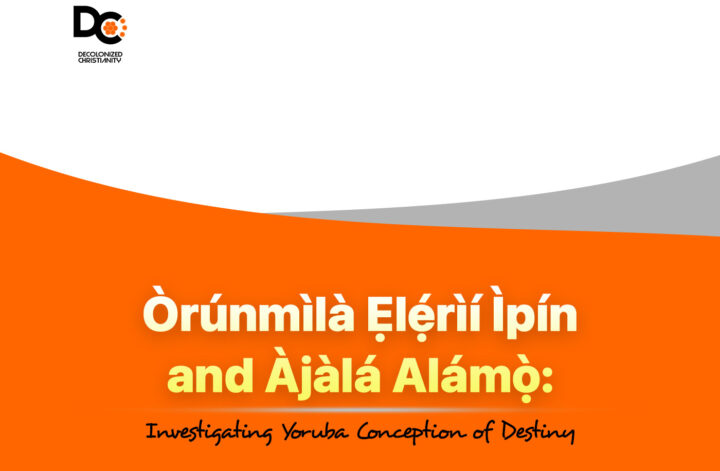Having addressed the cultural background of Jesus’ time and the ubiquitous physiognomic awareness recorded in the Hebrew Bible (See Part 1), we are now ready to look into relevant New Testament data. Our minds may have been so thoroughly clogged by the image of a White Jesus that we may be shocked to learn that the Bible says nothing that may help anyone visualize what the historical Jesus might have looked like. Though New Testament writers often portray Jesus as a type of Moses, not a single writer mentions Jesus’ physical trait like Exodus does with Moses. Consider the Gospel of John, for instance. Although John explicitly links Moses and Jesus when he says, “For the law was given through Moses; grace and truth came through Jesus Christ” (1:17), he says nothing about the physical form of Jesus. Instead, we get this verse: “The Word became flesh and made his dwelling among us. We have seen his glory, the glory of the one and only Son, who came from the Father, full of grace and truth” (1:14). As Joan Taylor remarks, “this does not immediately conjure up an image of a specific person who could be described in terms of height, facial features, handsomeness, beardedness, clothing, or whatever” (2).
Jesus, Physiognomy, and First-Century Rome (Series Part 1)
Background
Thanks to European imperialism manifested through colonization and slavery, one of these images is unmistakable. Indeed, the European Jesus is such a well-developed form that one could endlessly change the face of the image without affecting its recognizability. The White Jesus typically has long, straight hair with a long face as opposed to a rounded one. He is, of course, always white and often has blue eyes. The White Jesus never wears shorts or anything but a robe and a mantle. As Joan Taylor observes, the image or form of the White Jesus is so distinct that “he can be recognized as miraculously appearing in clouds, on pancakes, or pieces of toast” (1). The rather interesting irony is that the juxtaposed, brown-skinned image above is closer to what the historical Jesus looked like than the universally marketed White Jesus. In first-century Palestine, Jesus would have most likely kept shorter hair as it was customary. If he had long hair, it would be due to neglect and would look nothing like White Jesus’ coiffure.
Polyandry and Some Practical Issues (Series Part 5, Finale)
Women and Polygyny
There is no questioning the fact that women often are victims of polygyny. Sometimes, a woman may even effectuate the victimization of another woman. The case of biblical Sarah and Hagar is a good example. Under a belief that the birthing of a child under her roof would help her condition, barren Sarah offered her Egyptian servant to Abraham to impregnate. The Bible does not record any conversations seeking Hagar’s consent or interest in the matter. Sarah merely needed Hagar’s womb. Hagar would likely have been a teenager, and Abraham was about 85 years old. By today’s standards, this would likely be (statutory) rape. Nevertheless, men by patriarchy often used polygyny against women.
The Ideal Christian Marital Status (Series Part 4)
Generations of African Pentecostals (and their Western Evangelical counterparts) have been taught to look to the pre-Fall portions of Genesis and post-glorification texts of Revelation whenever they want to establish what is ideal. In fairness, the principle works sometimes. For instance, I think one can legitimately teach that the original human diet was plant-based. God says in Genesis 1:29, “I give you every seed-bearing plant on the face of the whole earth and every tree that has fruit with seed in it. They will be yours for food.” Although many Christians dislike this biblical dietary idea because they like their steaks and burgers a little too much as I do, it was really after the Fall that humans ate animals, according to Genesis. Also, it is very unlikely that glorified humans, after the restoration of Eden (Revelations 22), will eat animals for food.
Polygamy in the New Testament (Series Part 3)
When European missionaries condemned the polygamy they saw in Africa (see Part 1), they did so on an assumed authority of the New Testament. They concluded that both Jesus and Paul forbade polygamous unions. The following are the key passages informing such reasoning against polygyny: Matthew 5:31-32, Mark 10:2-12, Matthew 19: 1-9, 1 Corinthians 7:2-16, Ephesians 5:22-23, 1 Timothy 3:1-2, and Titus 1:6. Let us zoom in on each of these passages.
European Missionaries and Polygamy (Series Part 1)
“Our thinking has been so influenced by western theologians that we still continue to beat the old missionary drums which summon us to see that our cultural heritage is incompatible with Christianity.” — Rev. David Gitari, Kenyan Anglican Archbishop
A man cannot give what he does not have. We could add to this by borrowing from a Yoruba saying that he who has not been to another’s farm may erroneously assume that his father’s farm is the grandest. These maxims seem to be fair descriptions of the European missionaries who attempted to tackle polygamy in the continent. Coming from a culture where men had multiple unmarried mistresses, the European missionaries were ill-prepared to deal with Africa’s ubiquitous form of marriage: polygyny. Polygyny is a type of polygamy in which a man has more than one wife, and this was a quite common form of marriage in Africa before and after European encounters. Unsurprisingly, white missionaries assumed the worst about the polygyny they saw in Africa.
My Encounters with the Africa Study Bible: A Review
The message is simple: use the Africa Study Bible in your studies, for it will immensely help in exposing colonial ideals masquerading as Christian virtues and also arm you with knowledge of Africa’s colossal contributions to the faith.
Some years ago, while assisting in a Sunday School, a lady joined our class. She was a little above the age bracket that I was used to seeing, but she was calm, respectful, and teachable. I do not recall the lesson of the day, but it must have had a citation from the Pentateuch which mentioned ancient places like Cush or Put. Shortly after the reading, this lady raised a question: Why do we, black Christians in black churches, read passages having to do with Africa in such a hurry? On that occasion, her point was that we read through “Cush” or “Put” without mentioning that these terms have real referents that still exist today. We had read the passage like many Christians do the genealogy passages of the bible. After the class, I went to thank the lady for her contributions that day. It was then that I noticed she had an unusual bible with a trademark African design on its covers.
Sàngó and the Aláàfin: Ancient Yorùbá Use of Religion in Politics
Background
Sàngó’s story belongs to the very beginning of the Yorùbá nation which is believed to be founded by Odùduwà after migrating from “the East” to Ilé-Ifè. According to Samuel Johnson, Odùduwà might have originated from somewhere near modern-day Sudan or Egypt (5). People lived in the land before Odùduwà and his entourage got there (Johnson, 18); indeed, Odùduwà met Setilu, the father of Ifá worship, in the land (4). As is true of all empires, not all the people in the Ọ̀yọ́ empire were originally natives. Many of the different tribes that self-identify as Yoruba today likely had ancestors who identified differently. As Odùduwà and his army advanced, they absorbed natives of the land into the dominant culture of proto-Yorùbá. As I shall show later, the narrative fed to the people of an empire can be a powerful political tool having the effect of conferring a common identity and solidarity to a people group.
Achebe Rewrites Africa’s History: The Glorious “Primitive Tribes” (Part 1)
The Commissioner went away, taking three or four of the soldiers with him. In the many years in which he had toiled to bring civilization to different parts of Africa he had learnt a number of things. One of them was that a District Commissioner must never attend to such undignified details as cutting down a dead man from the tree. Such would give the natives a poor opinion of him. In the book which he planned to write he would stress that point. As he walked back to the court he thought about that book. Every day brought him some new material. . . . There was so much else to include, and one must be firm in cutting out details (147-48).
Yorùbá Creation Account (Series Part 1)
Àyànmọ́ mi láti ọwọ́ Olúwa ni
Ẹ̀dá ayé kan kò lè ṣí mi nípò padà
Ẹ̀lẹ̀dá mi yé mo bẹ̀bẹ̀ yé
Ẹ̀lẹ̀dá mi gbé mi lékè ayé.
This piece is from a famous track of the legendary Juju maestro, Ebenezer Obey. Roughly translated, the stanza says:
My destiny is from God
No human can change my destiny
Oh, my Head (Creator) I plead
My Creator, help me to be victorious over evil people.






